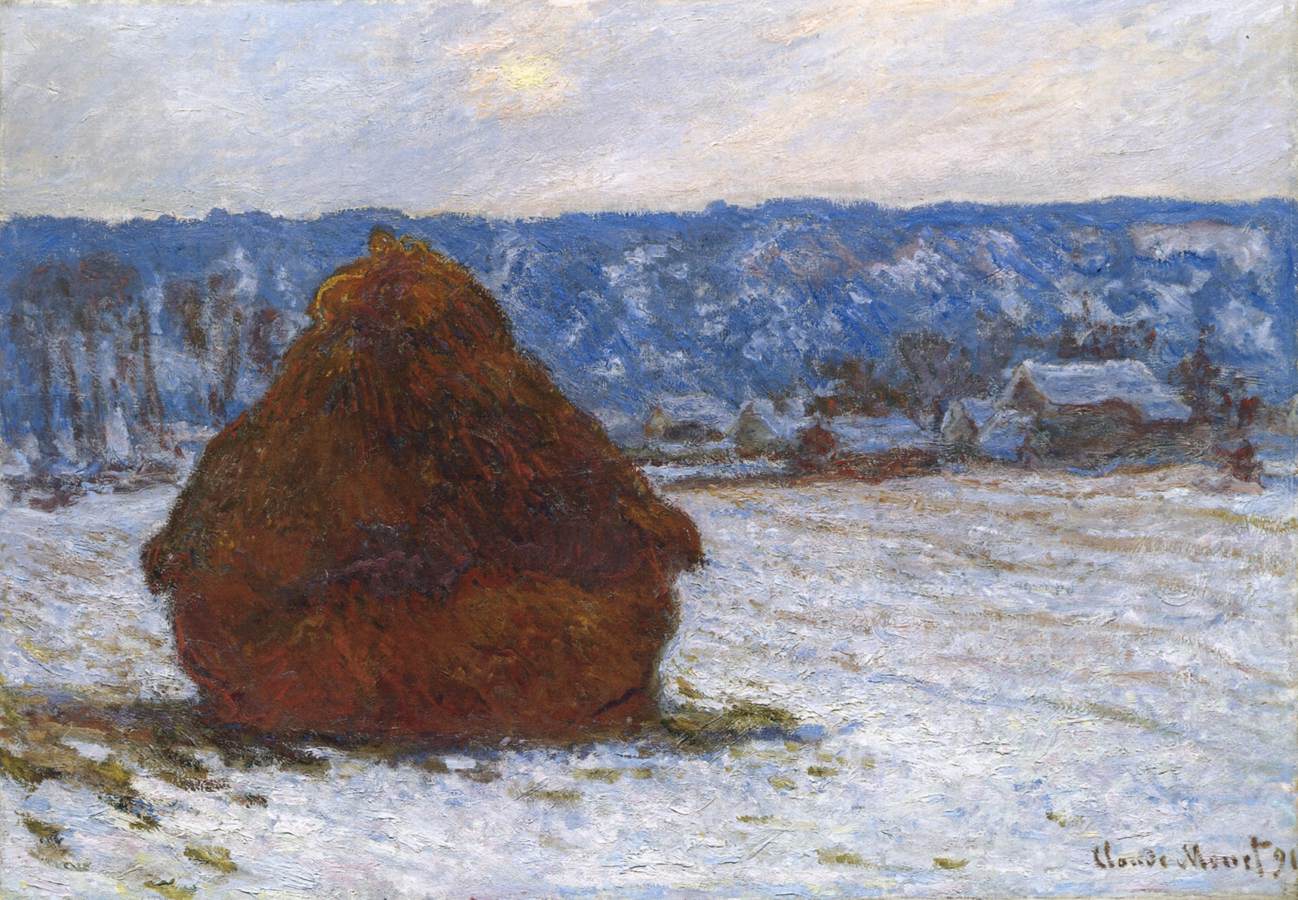Description
Claude Monet's painting Stack of Wheat, Snow Effect, Overcast Day is a masterpiece of French Impressionism in the collection of the Art Institute of Chicago. This work was painted in 1891 and is one of many paintings Monet created in his series of "piles of wheat" depicting the seasons of the year and different weather conditions.
Monet's artistic style is characterized by his technique of loose brushstrokes and the application of paint in thin layers to create a sense of light and movement. In Stack of Wheat, Snow Effect, Overcast Day, Monet uses this technique to create a hazy, diffuse atmosphere that evokes the cold and damp of winter.
The composition of the paint is simple but effective. The wheat pile is in the center of the image, surrounded by a snowy field and a gray sky. The pile of wheat rises towards the sky, creating a sensation of verticality that contrasts with the horizontality of the snowy field.
The colors used in the painting are predominantly cool shades of blue, gray and white. These shades are used to create a cool, wet feeling, and to bring out the texture and shape of the wheat pile.
The history of the painting is interesting because Monet painted it at a time when he was struggling financially. Despite this, Monet continued to paint and create masterpieces that today are considered some of the most important of the Impressionist movement.
A little known aspect of the painting is that Monet created several versions of this same scene in different weather conditions. Each version of the wheat pile represents a different season of the year and weather condition, demonstrating Monet's obsession with capturing nature in all its forms.
In conclusion, Stack of Wheat, Snow Effect, Overcast Day is a masterpiece of French Impressionism noted for its loose brushwork technique, effective composition, and use of cool tones to create a feeling of cold and damp. The history of the painting and the little-known aspects of the work make it even more fascinating and valuable for art lovers.

